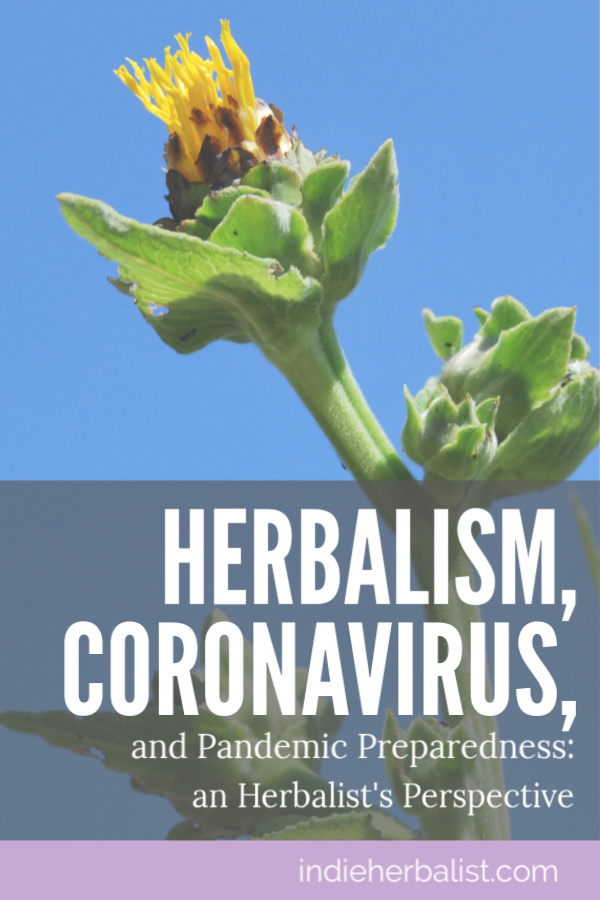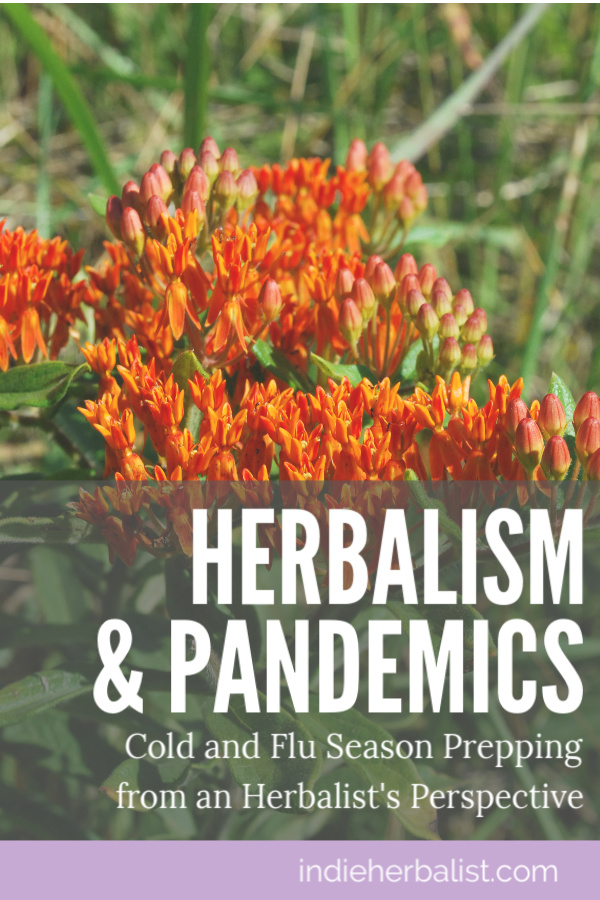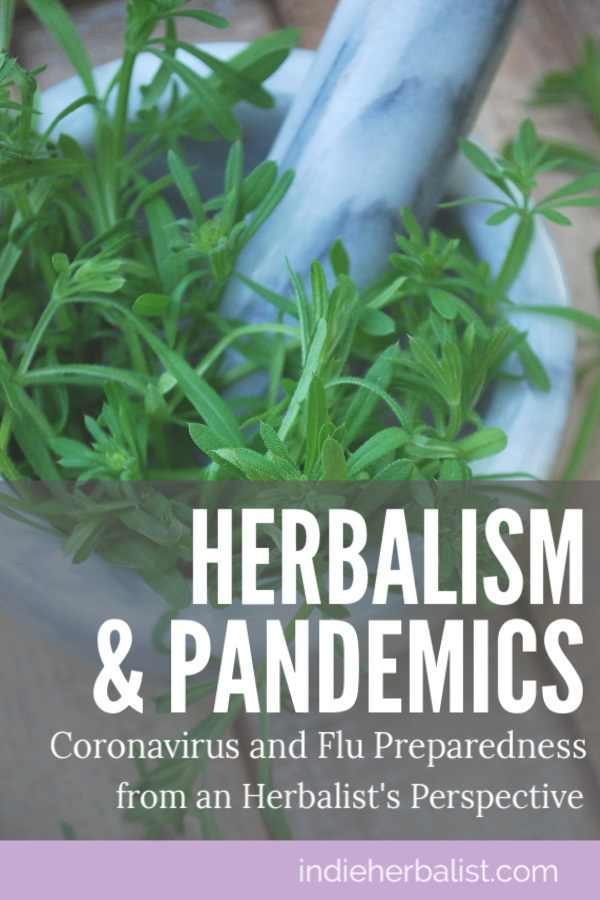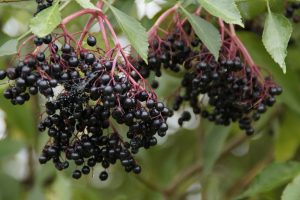Links contained in this post and elsewhere on my website may include affiliate links. When you make a purchase through these links, I earn a commission at no additional cost to you. I only link to products and services that I love - and that I think you will love, too!
I’ve been watching the news about the new coronavirus, Covid-19, very carefully. I’m sure many of you have been as well! It’s taken me a while to sift through the information and get my thoughts together. However, yesterday officials warned that Americans need to prepare for the spread of the virus in the U.S. This includes being ready for “potentially severe disruptions to daily life”.
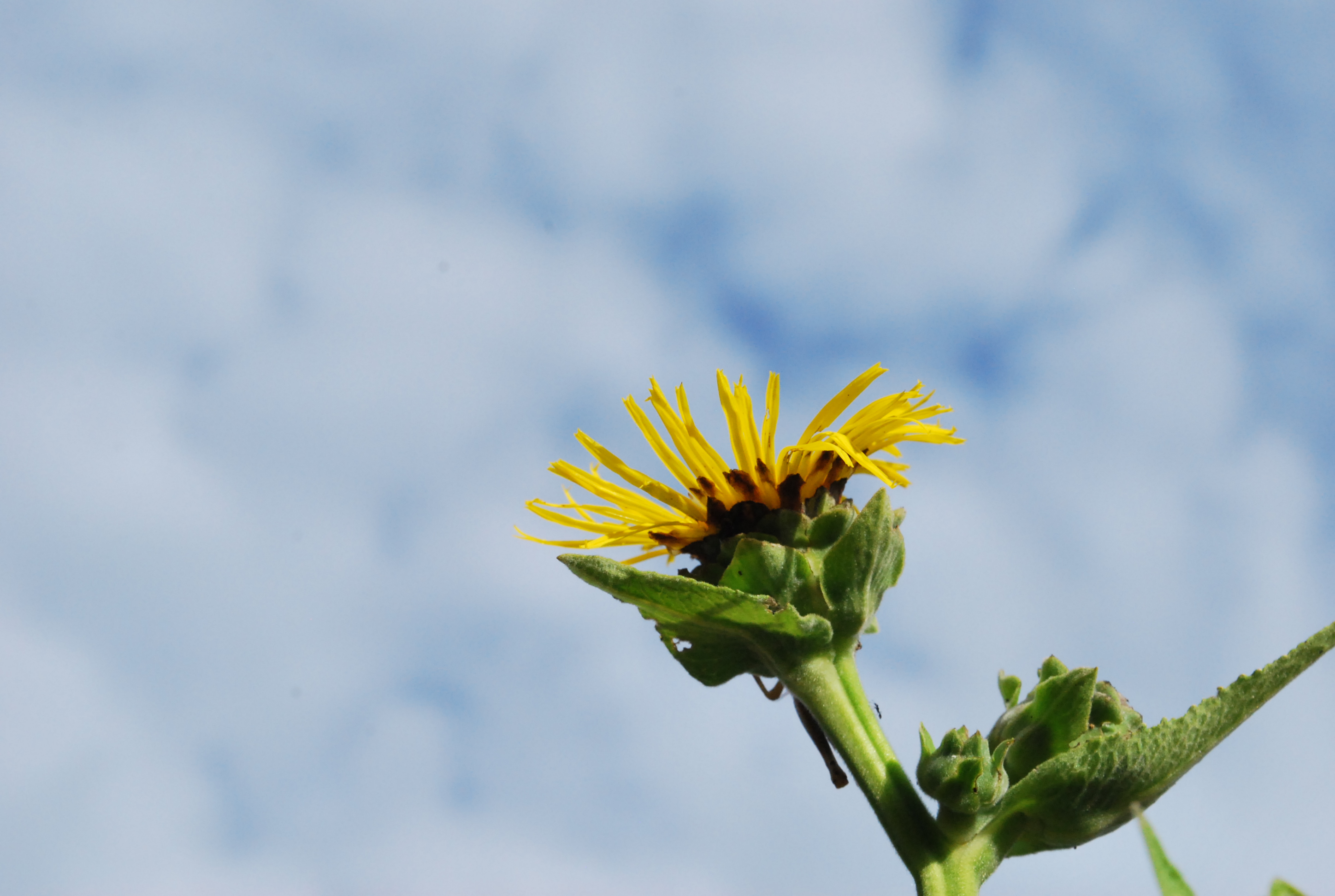
Hopefully, many of you already have general pandemic preparedness strategies at the ready. If you don’t, take the first steps for pandemic preparedness as soon as possible. This includes being ready to spend a week or two at home if businesses and schools are ordered to close. Ready.gov has a short list of things to do to prepare for a pandemic. It includes considering the following questions:
- Do you have two weeks of groceries on hand?
- If you take daily prescription medications, do you have a back up supply?
- Do you have supplies at home like cold/flu remedies, electrolytes and vitamins?
Some other things to consider include:
- How will you entertain yourself and your family if you can’t leave the house?
- Are you financially prepared if you can’t go to work and your job isn’t a job you can do from home?
- Do you have enough food and supplies at home for your pets for two weeks?
- Do you know how to create a “sick room” at home to help quarantine sick family members?
My friend Lisa Bedford at the Survival Mom has a great list with some suggestions if you’d like more info on general pandemic preparedness. She has a very practical, calm approach to prepping that I love.
A Note About Covid-19
The good news about the Covid-19 coronavirus, if we can say there is any good news about it, is that there’s nothing particularly odd or virulent about it. It’s not a hemorrhagic fever like dengue or ebola. There’s not a high mortality rate like SARS or MERS. It acts, for all intents and purposes, like a common cold or flu virus.
The fatalities from Covid-19 mainly appear to be among the elderly or those with pre-existing lung conditions or pre-existing conditions that lower immunity. If you or your loved ones are in one of those high risk groups, your situation will be unique. You should talk with your doctor and an experienced herbalist about what you might expect and how you need to prepare.
For the rest of us, there’s nothing particularly novel that you need to do, herbally speaking, to prepare for a Covid-19 pandemic. If you have herbal lung and immune system support herbs in your preps already, you’re probably all set.
Before we look at an herbal perspective on lower respiratory infections, I’d like to point out a few good articles about coronavirus. Knowledge is power! If you’d like to read up about how this coronavirus causes infection, Scientific American has a good article that can give you more background: How Coronaviruses Cause Infection.
National Geographic has a really in-depth article about how coronavirus impacts the lungs. It’s called What Coronavirus Does to the Body. That’s where I’ve drawn most of my conclusions about how I want to prepare for Covid-19 from an herbal perspective. Essentially, Covid-19 causes a lower respiratory tract infection. So let’s talk about how herbalists address that type of imbalance in the body.
How Herbalists Respond to Lower Respiratory Infections
Herbalists need to think in terms of lung support and immune system support when it comes to lower respiratory infections. We can do this by addressing body systems (structure and function) and energetics.
Body System Support for Lower Respiratory Infections
During a lower respiratory tract infection, the immune system is very activated in the lungs themselves. This can lead to fluid and immune system waste building up in the lungs and a state of inflammation. That’s what makes lower respiratory infections so uncomfortable!
The lymph system is responsible for helping to clear fluid from the lungs, so using lymphatic herbs to support healthy lymphatic function can be a good strategy. I like to use a lymph support formula as a way to support the immune system and the lungs during a respiratory infection. Cleavers (Gallium aparine), redroot (Ceanothus americanus) and Echinacea (Echinacea spp) are all good examples of safe, reliable lymphatic herbs.
If a cough is particularly harsh or strong, herbal antispasmodics can be used to soothe the lungs and allow someone to get some much needed rest. However, it’s important to balance the use of an antispasmodic so that you don’t work against the body trying to move mucus out of the way! It’s typically better to use an antispasmodic herb with dry coughs. Mullein is a perfect example of a respiratory support herb that also has antispasmodic properties. Nervine antispasmodics like valerian (Valeriana officinalis) and passionflower (Passiflora incarnata) are two that I have found particularly useful in herbal respiratory formulas. Lobelia (Lobelia inflata) is one of the more traditional choices here (and a good one), but it is a low dose botanical and can be emetic if used indiscriminately.
Energetics and Lower Respiratory Infections
Herbalists are most successful when we address the person rather than the disease. Traditional herbalism focuses on how the body is out of balance with itself and the surrounding environment. It does this by using terms like dampness, dryness, heat, and cold to describe how the body compares with a normal, healthy state.
This is just as true of extreme viruses like ebola that cause hemorrhagic fevers (an example of what Traditional Chinese Medicine labels “Heat Marauding in the Blood”) as it is of a common cold or the flu. It’s also a more versatile way to look at health, because two people with the same disease can be out of balance in different ways.
For instance, one person with the flu may have a high fever and a dry, unproductive cough. The next person with the same strain of flu may only have a low fever, have lots of clear mucus and a very wet, boggy cough that quickly turns into pneumonia. The first person has Heat signs and Dryness. The second person has Cold signs and Dampness.
By matching cooling, moistening herbs to the first person and warming, drying herbs to the second, the herbalist can help the body find its innate balance more quickly.
Wet, Productive Coughs
First, remember that even though a wet cough is gross, it’s a good thing! Your body is working to move out fluid and immune system byproducts so it can dispatch the virus and heal underlying inflammation. Herbs that work with your body to dry the lungs and move mucus include elecampane, ginger, and thyme.
Dry Coughs
Dry coughs are annoying and uncomfortable. Marshmallow (Althea officinalis) and plantain (Plantago spp.) are examples of moistening herbs that soothe irritated lungs. Pleurisy root (Asclepias tuberosa) is also good, as is mullein (verbascum thapsus).
Yellow Mucus
In TCM and Western herbalism, yellow coloring in the mucus indicates the presence of Heat, so herbs with a cooling nature are preferable. Oregon grape (Mahonia aquifolia) and marshmallow (Althea officinalis) are examples of cooling herbs that could be used to help clear Heat. Horehound (marubium vulgare) is another great example.
White Mucus
In traditional herbalism, white or clear mucus is a sign of coldness. The herbs I mentioned above that address a wet cough are often good choices when white or clear mucus is present. These include elecampane (Inula helenium) and ginger (Zingiber officinale).
Staying Well
During cold and flu season, I also use some herbs on a daily basis to support my immune system. If I’m keeping up with my herbs, I will usually still get a cold once a year, but I seem to recover more quickly than those around me and it’s not as severe. This year, I was lazy with my herbs because I was stressed and had so much going on. I caught a nasty case of flu and pneumonia as a result! As soon as I felt better I made my usual syrup and fire cider and stocked back up on my yarrow and elderflower tea.
Elderberry Syrup
I make an elderberry syrup that includes astragalus (Astragalus membranaceus), schisandra berries, rosehips, and spices. Astragalus is highly valued in TCM for its ability to support immunity. Actually, it’s one of the main herbs in Jade Screen Formula, which is perfect for cold and flu season. It’s next to impossible to find the herbal ingredients to make your own Jade Screen Formula, but Planetary Herbals makes an alcohol free liquid that’s great. Personally, I make my own syrup with Western herbs because it’s less expensive. Schisandra is an adaptogen that I love, so I include it in my syrup as well.
The Herbal Academy has two great recipes for elderberry syrup. The first one is very simple. The second one has calendula, an herb that helps support the lymph system and immunity. You could add astragalus to either of these recipes if you want. I will also try to post an article with my recipe next week!
Fire Cider
There are several humble kitchen herbs and spices that are underrated when it comes to daily wellness. Fire cider, first made popular by herbalist Rosemary Gladstar, has become legendary in the home herbalism world, and for good reason! It’s accessible, easy to make, and can be adapted based on what you have available. The point of fire cider is to include pungent, spicy herbs to help boost your immune system. The Herbal Academy has an article about fire cider (#affiliate) with more background and a recipe to get you started.
There are as many recipes as there are herbalists, but good candidates include garlic, ginger, horseradish, cayenne, and onions. Some people like adding citrus or elderberries or use a variety of hot peppers. I’ve also seen versions with rosemary, thyme, and sage. This version even uses pomegranate and hibiscus!
The ingredients of choice are steeped in apple cider vinegar, then strained and honey is added to the finished vinegar. My fire cider usually includes garlic, cayenne, oranges, cranberries, ginger, and turmeric.
Sweat it Out Tea
My other approach is reserved for days when I suspect I might be coming down with something. In traditional herbalism, herbal diaphoretics are used to promote a good sweat and help the body “sweat it out”. One of the most famous of these formulas includes yarrow, elderflowers, and peppermint.
I keep a jar ready of equal parts dried elderflowers, peppermint leaves, and yarrow flowering tops. When I feel like I might be getting sick, I make a cup of tea with a few teaspoons of the tea mix. After I drink the tea, I take a hot shower or bath and then get into bed with cozy pajamas and lots of blankets. Be prepared to take another shower in the middle of the night, because you may wake up drenched in sweat (but feeling remarkably better).
The Herbs I Keep for Pandemic Preparedness
So what do I keep in my personal herb kit for pandemic preparedness? I keep a selection of the respiratory herbs mentioned above, but I also keep:
- yarrow (Achillea millefolium)
- astragalus (Astragalus membranaceus)
- Baical skullcap (Scutellaria baicalensis).
Yarrow
This is a fascinating herb that any prepper-minded herbalist needs to get to know well. It has many traditional uses across the board from injuries, to fevers, to women’s health. It’s an important ingredient in my sweat it out tea blend (mentioned above).
Astragalus
Astragalus is valued for it’s ability to support immunity during cold and flu season. It’s used in TCM formulas designed to protect the immune system, but shouldn’t be used while you are sick.
Baical Skullcap
Baical skullcap (Scutellaria baicalensis) is a TCM herb that I also keep on hand because there’s been some good research on it’s ability to support the immune system during infections. I learned about it from Herbal Antivirals: Natural Remedies for Emerging and Resistant Viral Infections by Stephen Harrod Buhner, (affiliate link) and highly recommend his book for anyone interested in pandemic herbal preparedness.
A List for Getting Started
That’s a lot of information. Normally, I’d break things down into smaller blog posts, but I think it makes sense to keep all of the info together in this case. So, you’ve read the rest of this article and have a good idea of the background info. Where do you go from here? A few of the herbs I mentioned above also have reputations as herbs that tonify the lungs and may be applicable in a wide variety of settings. They make a great place to start.
- elecampane (Inula helenium)
- pleurisy root (Asclepias tuberosa)
- mullein (Verbascum thapsus)
- and horehound (Marubium vulgare)
plus,
- yarrow (Achillea millefolium)
- astragalus (Astragalus membranaceus)
- and redroot (Ceanothus americanum)
I suggest that you research and add each herb to your personal materia medica. That way, you can become intimately familiar with them, including possible contraindications, interactions, and the variety of ways each can be used.
If you aren’t familiar with creating a materia medica, the Herbal Academy has an affordable online Materia Medica course (it’s only $45) so you can learn to research like an herbalist. They also have excellent full-length courses for taking your herbal skills from beginner to advanced (affiliate link).
I’ve worked as part of their writing team in the past, so they are a school I’m comfortable recommending. Plus, all of their courses self-guided and online. That makes it easy to fit your studies in around your schedule!
The book I mentioned earlier, Herbal Antivirals: Natural Remedies for Emerging and Resistant Viral Infections by Stephen Harrod Buhner, (affiliate link), is another great resource for herbalism and pandemic preparedness.
All the best,
Agatha
About Me
I’m an herbalist and author from Atlanta, Georgia. Thanks for visiting my blog! My popular herbal recipe book is full of creative ideas for supporting wellness with adaptogens like rhodiola, holy basil, and ashwagandha. You can learn more about my book here. It’s available for purchase through Amazon, Barnes and Noble, or by request at your favorite local book shop!
If you are interested in taking your herbal studies to the next level, I recommend online courses by The Herbal Academy (#affiliate). I was part of the writing team for the Advanced Course.
